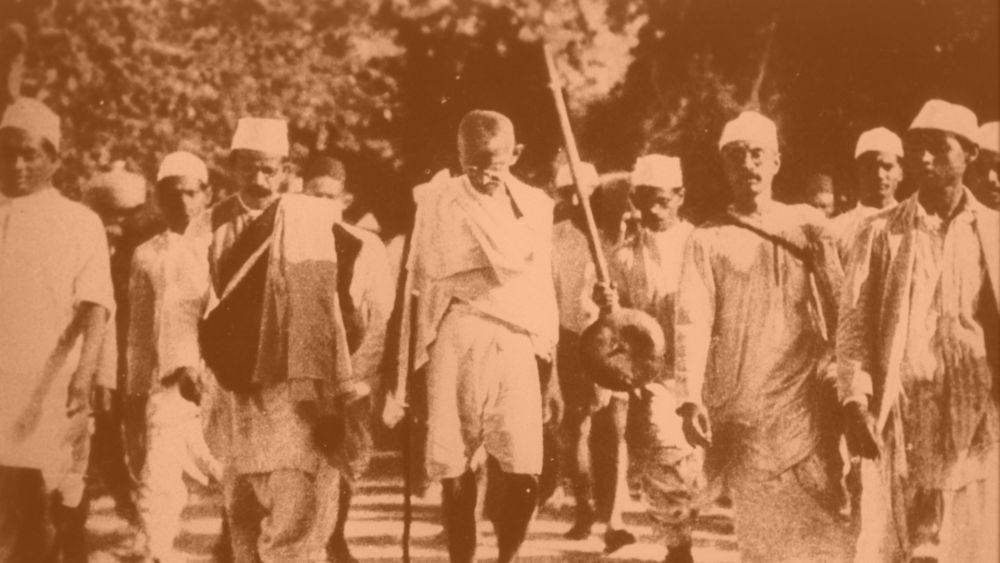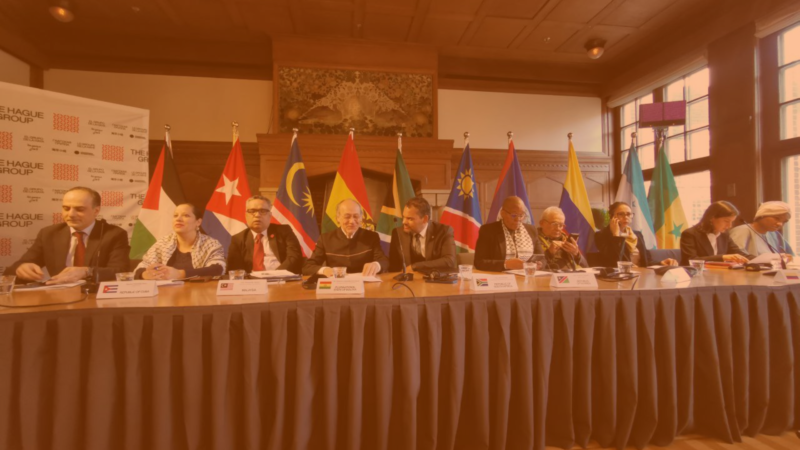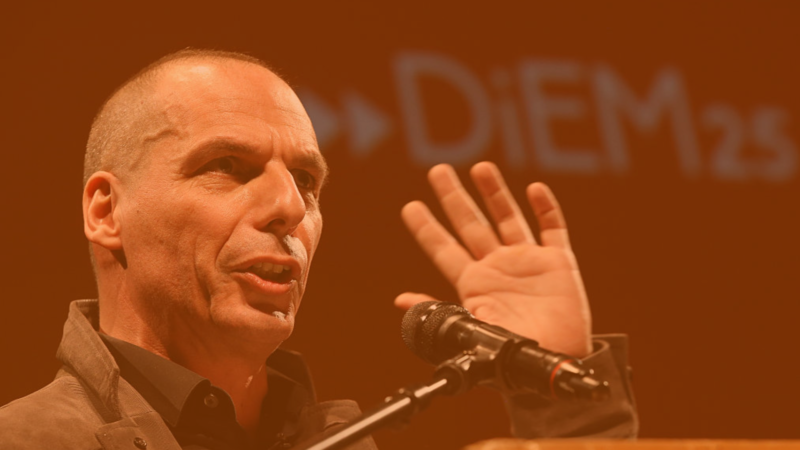What underpins the transformative impact of campaigning? Short term success or failure may be a poor guide to the future
History remembers Mahatma Gandhi’s Salt March as one of the great episodes of resistance in the past century and as a campaign which struck a decisive blow against British imperialism. In the early morning of March 12, 1930, Gandhi and a trained cadre of 78 followers from his ashram began a march of more than 200 miles to the sea. Three and a half weeks later, on April 5, surrounded by a crowd of thousands, Gandhi waded into the edge of the ocean, approached an area on the mud flats where evaporating water left a thick layer of sediment, and scooped up a handful of salt.
Gandhi’s act defied a law of the British Raj mandating that Indians buy salt from the government and prohibiting them from collecting their own. His disobedience set off a mass campaign of non-compliance that swept the country, leading to as many as 100,000 arrests. In a famous quote published in the Manchester Guardian, revered poet Rabindranath Tagore described the campaign’s transformative impact: “Those who live in England, far away from the East, have now got to realise that Europe has completely lost her former prestige in Asia.” For the absentee rulers in London, it was “a great moral defeat.”
And yet, judging by what Gandhi gained at the bargaining table at the conclusion of the campaign, one can form a very different view of the salt satyagraha. Evaluating the 1931 settlement made between Gandhi and Lord Irwin, the Viceroy of India, analysts Peter Ackerman and Christopher Kruegler have contended that “the campaign was a failure” and “a British victory,” and that it would be reasonable to think that Gandhi “gave away the store.” These conclusions have a long precedent. When the pact with Irwin was first announced, insiders within the Indian National Congress, Gandhi’s organisation, were bitterly disappointed. Future Prime Minister Jawaharal Nehru, deeply depressed, wrote that he felt in his heart “a great emptiness as of something precious gone, almost beyond recall.”
That the Salt March might at once be considered a pivotal advance for the cause of Indian independence and a botched campaign that produced little tangible result seems to be a puzzling paradox. But even stranger is the fact that such a result is not unique in the world of social movements. Martin Luther King Jr.’s landmark 1963 campaign in Birmingham, Ala., had similarly incongruous outcomes: On the one hand, it generated a settlement that fell far short of desegregating the city, a deal which disappointed local activists who wanted more than just minor changes at a few downtown stores; at the same time, Birmingham is regarded as one of the key drives of the civil rights movement, doing perhaps more than any other campaign to push toward the historic Civil Rights Act of 1964.
This seeming contradiction is worthy of examination. Most significantly, it illustrates how momentum-driven mass mobilisations promote change in ways that are confusing when viewed with the assumptions and biases of mainstream politics. From start to finish – in both the way in which he structured the demands of the Salt March and the way in which he brought his campaign to a close – Gandhi confounded the more conventional political operatives of his era. Yet the movements he led profoundly shook the structures of British imperialism.
For those who seek to understand today’s social movements, and those who wish to amplify them, questions about how to evaluate a campaign’s success and when it is appropriate to declare victory remain as relevant as ever. To them, Gandhi’s may still have something useful and unexpected to say.
The instrumental approach
Understanding the Salt March and its lessons for today requires stepping back to look at some of the fundamental questions of how social movements effect change. With proper context, one can say that Gandhi’s actions were brilliant examples of the use of symbolic demands and symbolic victory. But what is involved in these concepts?
All protest actions, campaigns and demands have both instrumental and symbolic dimensions. Different types of political organising, however, combine these in different proportions.
In conventional politics, demands are primarily instrumental, designed to have a specific and concrete result within the system. In this model, interest groups push for policies or reforms that benefit their base. These demands are carefully chosen based on what might be feasible to achieve, given the confines of the existing political landscape. Once a drive for an instrumental demand is launched, advocates attempt to leverage their group’s power to extract a concession or compromise that meets their needs. If they can deliver for their members, they win.
Even though they function primarily outside the realm of electoral politics, unions and community-based organisations in the lineage of Saul Alinsky – groups based on building long-term institutional structures – approach demands in a primarily instrumental fashion. As author and organiser Rinku Sen explains, Alinsky established a long-standing norm in community organising which asserted that “winnability is of primary importance in choosing issues” and that community groups should focus on “immediate, concrete changes.”
A famous example in the world of community organising is the demand for a stoplight at an intersection identified by neighborhood residents as being dangerous. But this is just one option. Alinskyite groups might attempt to win better staffing at local social service offices, an end to discriminatory redlining of a particular neighborhood by banks and insurance companies, or a new bus route to provide reliable transportation in an underserved area. Environmental groups might push for a ban on a specific chemical known to be toxic for wildlife. A union might wage a fight to win a raise for a particular group of employees at a workplace, or to address a scheduling issue.
By eking out modest, pragmatic wins around such issues, these groups improve lives and bolster their organisational structures. The hope is that, over time, small gains will add up to substantial reforms. Slowly and steadily, social change is achieved.
The symbolic turn
For momentum-driven mass mobilisations, including the Salt March, campaigns function differently. Activists in mass movements must design actions and choose demands that tap into broader principles, creating a narrative about the moral significance of their struggle. Here, the most important thing about a demand is not its potential policy impact or winnability at the bargaining table. Most critical are its symbolic properties — how well a demand serves to dramatise for the public the urgent need to remedy an injustice.
Like conventional politicians and structure-based organisers, those trying to build protest movements also have strategic goals, and they might seek to address specific grievances as part of their campaigns. But their overall approach is more indirect. These activists are not necessarily focused on reforms that can be feasibly obtained in an existing political context. Instead, momentum-driven movements aim to alter the political climate as a whole, changing perceptions of what is possible and realistic. They do this by shifting public opinion around an issue and activating an ever-expanding base of supporters. At their most ambitious, these movements take things that might be considered politically unimaginable – women’s suffrage, civil rights, the end of a war, the fall of a dictatorial regime, marriage equality for same-sex couples – and turn them into political inevitabilities.
Negotiations over specific policy proposals are important, but they come at the endgame of a movement, once public opinion has shifted and power-holders are scrambling to respond to disruptions that activist mobilisations have created. In the early stages, as movements gain steam, the key measure of a demand is not its instrumental practicality, but its capacity to resonate with the public and arouse broad-based sympathy for a cause. In other words, the symbolic trumps the instrumental.
A variety of thinkers have commented on how mass movements, because they are pursuing this more indirect route to creating change, must be attentive to creating a narrative in which campaigns of resistance are consistently gaining momentum and presenting new challenges to those in power. In his 2001 book “Doing Democracy,” Bill Moyer, a veteran social movement trainer, stresses the importance of “sociodrama actions” which “clearly reveal to the public how the power-holders violate society’s widely held values[.]” Through well-planned shows of resistance – ranging from creative marches and pickets, to boycotts and other forms of non-cooperation, to more confrontational interventions such as sit-ins and occupations – movements engage in a process of “politics as theater” which, in Moyer’s words, “creates a public social crisis that transforms a social problem into a critical public issue.”
The types of narrow proposals that are useful in behind-the-scenes political negotiations are generally not the kinds of demands that inspire effective sociodrama. Commenting on this theme, leading New Left organiser and anti-Vietnam War activist Tom Hayden argues that new movements do not arise based on narrow interests or on abstract ideology; instead, they are propelled by a specific type of symbolically loaded issue — namely, “moral injuries that compel a moral response.” In his book “The Long Sixties,” Hayden cites several examples of such injuries. They include the desegregation of lunch counters for the civil rights movement, the right to leaflet for Berkeley’s Free Speech Movement, and the farmworker movement’s denunciation of the short-handled hoe, a tool that became emblematic of the exploitation of immigrant laborers because it forced workers in the fields to perform crippling stoop labor.
In some ways, these issues turn the standard of “winnability” on its head. “The grievances were not simply the material kind, which could be solved by slight adjustments to the status quo,” Hayden writes. Instead, they posed unique challenges to those in power. “To desegregate one lunch counter would begin a tipping process toward the desegregation of larger institutions; to permit student leafleting would legitimise a student voice in decisions; to prohibit the short-handled hoe meant accepting workplace safety regulations.”
Perhaps not surprisingly, the contrast between symbolic and instrumental demands can create conflict between activists coming from different organising traditions.
Saul Alinsky was suspicious of actions that produced only “moral victories” and derided symbolic demonstrations that he viewed as mere public relations stunts. Ed Chambers, who took over as director of Alinsky’s Industrial Areas Foundation, shared his mentor’s suspicion of mass mobilisations. In his book “Roots for Radicals,” Chambers writes, “The movements of the 1960s and 70s – the civil rights movement, the antiwar movement, the women’s movement – were vivid, dramatic, and attractive.” Yet, in their commitment to “romantic issues,” Chambers believes, they were too focused on attracting the attention of the media rather than exacting instrumental gains. “Members of these movements often concentrated on symbolic moral victories like placing flowers in the rifle barrels of National Guardsmen, embarrassing a politician for a moment or two, or enraging white racists,” he writes. “They often avoided any reflection about whether or not the moral victories led to any real change.”
In his time, Gandhi would hear many similar criticisms. Yet the impact of campaigns such as his march to the sea would provide a formidable rebuttal.
Difficult not to laugh
The salt satyagraha — or campaign of nonviolent resistance that began with Gandhi’s march — is a defining example of using escalating, militant and unarmed confrontation to rally public support and effect change. It is also a case in which the use of symbolic demands, at least initially, provoked ridicule and consternation.
When charged with selecting a target for civil disobedience, Gandhi’s choice was preposterous. At least that was a common response to his fixation on the salt law as the key point upon which to base the Indian National Congress’ challenge to British rule. Mocking the emphasis on salt, The Statesman noted, “It is difficult not to laugh, and we imagine that will be the mood of most thinking Indians.”
In 1930, the instrumentally focused organisers within the Indian National Congress were focused on constitutional questions – whether India would gain greater autonomy by winning “dominion status” and what steps toward such an arrangement the British might concede. The salt laws were a minor concern at best, hardly high on their list of demands. Biographer Geoffrey Ashe argues that, in this context, Gandhi’s choice of salt as a basis for a campaign was “the weirdest and most brilliant political challenge of modern times.”
It was brilliant because defiance of the salt law was loaded with symbolic significance. “Next to air and water,” Gandhi argued, “salt is perhaps the greatest necessity of life.” It was a simple commodity that everyone was compelled to buy, and which the government taxed. Since the time of the Mughal Empire, the state’s control over salt was a hated reality. The fact that Indians were not permitted to freely collect salt from natural deposits or to pan for salt from the sea was a clear illustration of how a foreign power was unjustly profiting from the subcontinent’s people and its resources.
Since the tax affected everyone, the grievance was universally felt. The fact that it most heavily burdened the poor added to its outrage. The price of salt charged by the government, Ashe writes, “had a built-in levy – not large, but enough to cost a laborer with a family up to two weeks wages a year.” It was a textbook moral injury. And people responded swiftly to Gandhi’s charge against it.
Indeed, those who had ridiculed the campaign soon had reason to stop laughing. In each village through which the satyagrahis marched, they attracted massive crowds — with as many of 30,000 people gathering to see the pilgrims pray and to hear Gandhi speak of the need for self-rule. As historian Judith Brown writes, Gandhi “grasped intuitively that civil resistance was in many ways an exercise in political theater, where the audience was as important as the actors.” In the procession’s wake, hundreds of Indians who served in local administrative posts for the imperial government resigned their positions.
After the march reached the sea and disobedience began, the campaign achieved an impressive scale. Throughout the country, huge numbers of dissidents began panning for salt and mining natural deposits. Buying illegal packets of the mineral, even if they were of poor quality, became a badge of honor for millions. The Indian National Congress set up its own salt depot, and groups of organised activists led nonviolent raids on the government salt works, blocking roads and entrances with their bodies in an attempt to shut down production. News reports of the beatings and hospitalisations that resulted were broadcast throughout the world.
Soon, the defiance expanded to incorporate local grievances and to take on additional acts of noncooperation. Millions joined the boycott of British cloth and liquor, a growing number of village officials resigned their posts, and, in some provinces, farmers refused to pay land taxes. In increasingly varied forms, mass non-compliance took hold throughout a vast territory. And, in spite of energetic attempts at repression by British authorities, it continued month after month.
Finding issues that could “attract wide support and maintain the cohesion of the movement,” Brown notes, was “no simple task in a country where there were such regional, religious and socio-economic differences.” And yet salt fit the bill precisely. Motilal Nehru, father of the future prime minister, remarked admiringly, “The only wonder is that no one else ever thought of it.”
Beyond the pact
If the choice of salt as a demand had been controversial, the manner in which Gandhi concluded the campaign would be equally so. Judged by instrumental standards, the resolution to the salt satyagraha fell short. By early 1931, the campaign had reverberated throughout the country, yet it was also losing momentum. Repression had taken a toll, much of Congress’ leadership had been arrested, and tax resisters whose property had been seized by the government were facing significant financial hardship. Moderate politicians and members of the business community who supported the Indian National Congress appealed to Gandhi for a resolution. Even many militants with the organization concurred that talks were appropriate.
Accordingly, Gandhi entered into negotiations with Lord Irwin in February 1931, and on March 5 the two announced a pact. On paper, many historians have argued, it was an anti-climax. The key terms of the agreement hardly seemed favorable to the Indian National Congress: In exchange for suspending civil disobedience, protesters being held in jail would be released, their cases would be dropped, and, with some exceptions, the government would lift the repressive security ordinances it had imposed during the satyagraha. Authorities would return fines collected by the government for tax resistance, as well as seized property that had not yet been sold to third parties. And activists would be permitted to continue a peaceful boycott of British cloth.
However, the pact deferred discussion of questions about independence to future talks, with the British making no commitments to loosen their grip on power. (Gandhi would attend a Roundtable conference in London later in 1931 to continue negotiations, but this meeting made little headway.) The government refused to conduct an inquiry into police action during the protest campaign, which had been a firm demand of Indian National Congress activists. Finally, and perhaps most shockingly, the Salt Act itself would remain law, with the concession that the poor in coastal areas would be allowed to produce salt in limited quantities for their own use.
Some of the politicians closest to Gandhi felt extremely dismayed by the terms of the agreement, and a variety of historians have joined in their assessment that the campaign failed to reach its goals. In retrospect, it is certainly legitimate to argue about whether Gandhi gave away too much in negotiations. At the same time, to judge the settlement merely in instrumental terms is to miss its wider impact.
Claiming symbolic victory
If not by short-term, incremental gains, how does a campaign that employs symbolic demands or tactics measure its success?
For momentum-driven mass mobilisations, there are two essential metrics by which to judge progress. Since the long-term goal of the movement is to shift public opinion on an issue, the first measure is whether a given campaign has won more popular support for a movement’s cause. The second measure is whether a campaign builds the capacity of the movement to escalate further. If a drive allows activists to fight another day from a position of greater strength — with more members, superior resources, enhanced legitimacy and an expanded tactical arsenal — organisers can make a convincing case that they have succeeded, regardless of whether the campaign has made significant progress in closed-door bargaining sessions.
Throughout his career as a negotiator, Gandhi stressed the importance of being willing to compromise on non-essentials. As Joan Bondurant observes in her perceptive study of the principles of satyagraha, one of his political tenets was the “reduction of demands to a minimum consistent with the truth.” The pact with Irwin, Gandhi believed, gave him such a minimum, allowing the movement to end the campaign in dignified fashion and to prepare for future struggle. For Gandhi, the viceroy’s agreement to allow for exceptions to the salt law, even if they were limited, represented a critical triumph of principle. Moreover, he had forced the British to negotiate as equals — a vital precedent that would be extended into subsequent talks over independence.
In their own fashion, many of Gandhi’s adversaries agreed on the significance of these concessions, seeing the pact as a misstep of lasting consequence for imperial powers. As Ashe writes, the British officialdom in Delhi “ever afterwards… groaned over Irwin’s move as the fatal blunder from which the Raj never recovered.” In a now-infamous speech, Winston Churchill, a leading defender of the British Empire, proclaimed that it was “alarming and also nauseating to see Mr. Gandhi… striding half-naked up the steps of the Vice-regal palace… to parley on equal terms with the representative of the King-Emperor.” The move, he claimed, had allowed Gandhi – a man he saw as a “fanatic” and a “fakir” – to step out of prison and “[emerge] on the scene a triumphant victor.”
While insiders had conflicted views about the campaign’s outcome, the broad public was far less equivocal. Subhas Chandra Bose, one of the radicals in the Indian National Congress who was skeptical of Gandhi’s pact, had to revise his view when he saw the reaction in the countryside. As Ashe recounts, when Bose traveled with Gandhi from Bombay to Delhi, he “saw ovations such as he had never witnessed before.” Bose recognised the vindication. “The Mahatma had judged correctly,” Ashe continues. “By all the rules of politics he had been checked. But in the people’s eyes, the plain fact that the Englishman had been brought to negotiate instead of giving orders outweighed any number of details.”
In his influential 1950 biography of Gandhi, still widely read today, Louis Fischer provides a most dramatic appraisal of the Salt March’s legacy: “India was now free,” he writes. “Technically, legally, nothing had changed. India was still a British colony.” And yet, after the salt satyagraha, “it was inevitable that Britain should some day refuse to rule India and that India should some day refuse to be ruled.”
Subsequent historians have sought to provide more nuanced accounts of Gandhi’s contribution to Indian independence, distancing themselves from a first generation of hagiographic biographies that uncritically held up Gandhi as the “father of a nation.” Writing in 2009, Judith Brown cites a variety of social and economic pressures that contributed to Britain’s departure from India, particularly the geopolitical shifts that accompanied the Second World War. Nevertheless, she acknowledges that drives such as the Salt March were critical, playing central roles in building the Indian National Congress’ organisation and popular legitimacy. Although mass displays of protest alone did not expel the imperialists, they profoundly altered the political landscape. Civil resistance, Brown writes, “was a crucial part of the environment in which the British had to make decisions about when and how to leave India.”
As Martin Luther King Jr. would in Birmingham some three decades later, Gandhi accepted a settlement that had limited instrumental value but that allowed the movement to claim a symbolic win and to emerge in a position of strength. Gandhi’s victory in 1931 was not a final one, nor was King’s in 1963. Social movements today continue to fight struggles against racism, discrimination, economic exploitation and imperial aggression. But, if they choose, they can do so aided by the powerful example of forebears who converted moral victory into lasting change.
This article originally appeared in Waging Nonviolence, and is reproduced here with permission.
Do you want to be informed of DiEM25's actions? Sign up here















